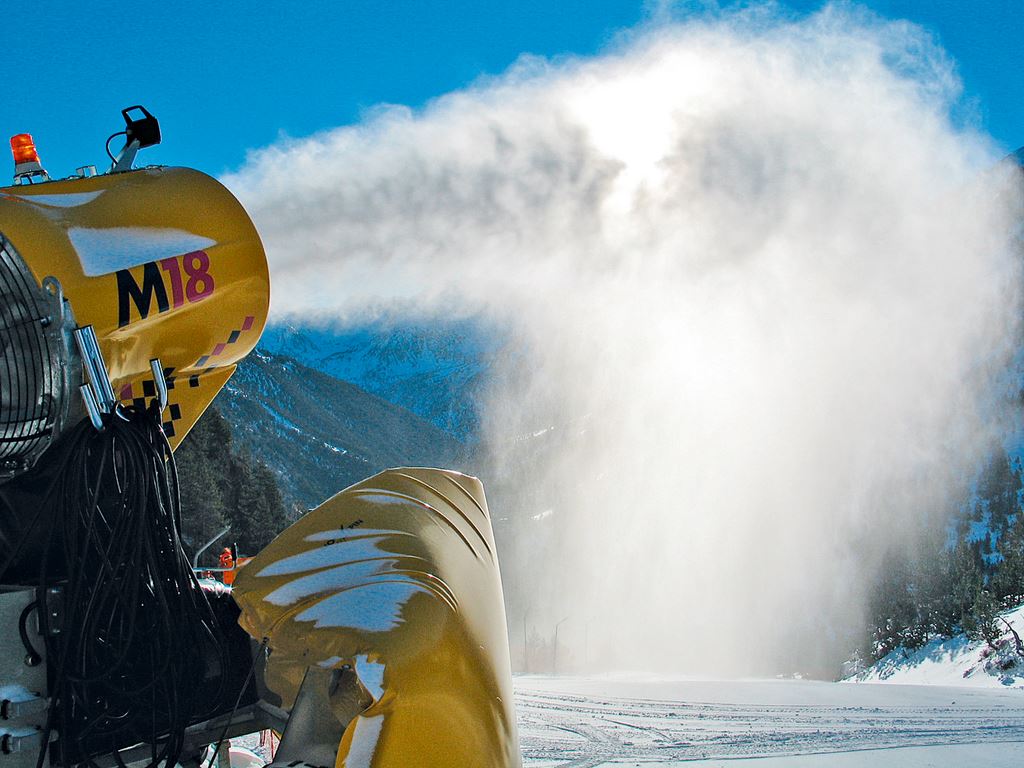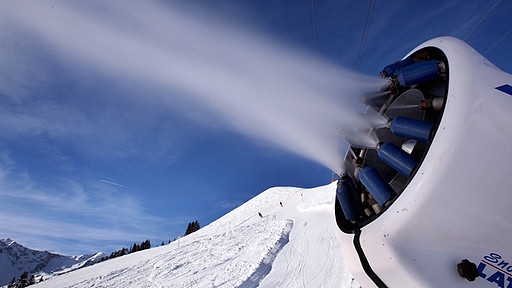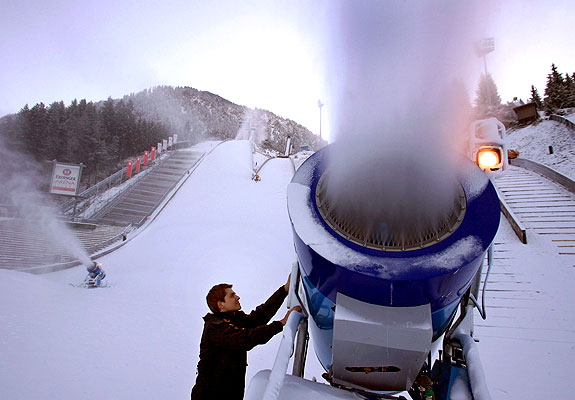Cuando el invierno se resiste a aparecer y las temperaturas no bajan, los planes para ir a esquiar durante el mes de enero o de febrero se pueden ver truncados. O al menos así sucedía antaño. Hoy en día, por suerte, el ser humano es capaz de generar nieve artificial para llenar las montañas de una bella capa blanca sobre la que poder divertirse de miles de formas tanto niños como adultos.
No obstante, quizá alguna vez te hayas preguntado cómo es posible hacer una nieve artificial pero sólida y duradera a la vez. En ITV Ice For Life te lo contamos. Pero antes profundizar en ello, es necesario saber cómo se forma la nieve natural. Y es que la nieve son cristales que crecen en la atmósfera mediante la absorción de pequeñas gotas de agua que, cuando colisionan, se unen entre sí formando los copos de nieve. Estos copos caen al suelo por su propio peso.
¿Cuál es la diferencia con la lluvia? Lógicamente, la temperatura. La nieve se forma con una temperatura atmosférica de cero grados o menos aunque también debe haber un cierto grado de humedad para completar el proceso. Mientras más temperatura haya, la nieve pasará a ser granizo o lluvia.
En las pistas de esquí, la fórmula para crear nieve es el uso de un cañón innivador que funciona a partir de agua y aire presurizados y expulsados a baja temperatura. La innovación artificial comienza con una fuente de agua en un río, lago o embalse. El agua se bombea a través de una tubería hacia la montaña mediante una potente bomba. Esta agua se distribuye a través de una compleja red de cañerías que interconecta toda la instalación. Después llega la adición de aire. Se realiza mediante una planta dedicada con un compresor de aire que lo enfría y se encarga de retirarle la humedad que porte. Ese aire frío y muy seco se dirige por un gasoducto paralelo al de la tubería de agua. Ambos confluyen en el cañón, que expulsa aire y agua a un tiempo. Si las condiciones son las adecuadas la nieve se forma en el acto.
Por cierto, la nieve artificial también la puedes crear en casa para pasar un rato divertido con los más pequeños de la casa. Os dejamos un vídeo donde se explica cómo hacerlo.
How natural and artificial snow are created?
When winter does not want to show up and temperatures do not go down, plans for going skiing in January or February can be frustrated. Or at least that is how it used to be. Luckily today, we are capable of making artificial snow to cover the mountains with a beautiful white layer on which we can have fun in lots of ways, both children and adults.
However, maybe sometime you have wondered how is it possible to make solid and lasting artificial snow. At ITV we tell you how. But before that, you need to know how natural snow is formed. Snow is made of crystals growing in the atmosphere through the absorption of water droplets which, when crashing with each other, get together forming snow flakes. These flakes fall by gravity.
What is the difference with rain? Obviously, temperature. Snow is formed with an ambient temperature of zero degrees or less, although there also has to be a certain degree of moisture to complete the process. Depending on the temperature, snow can become hail or rain.
In ski resorts, the formula for making snow is forcing water and pressurized air at low temperatures through a snow cannon. Snowmaking begins with a water source from a river, pond or reservoir. Water is pumped through a pipe towards the mountain with a powerful pump. This water is distributed through a complex pipe network to the whole facility. Then, air is added. It is done by means of a compressor which cools the air and takes off any moisture it can have. This cold, dry air is taken along a separate pipeline following the same path as the water pipeline. Both end in the cannon, which throws air and water at the same time. With the right conditions, snow forms right away.
By the way, artificial snow can also be made at home to have a great time with your kids. We leave a video explaining how it’s made.





